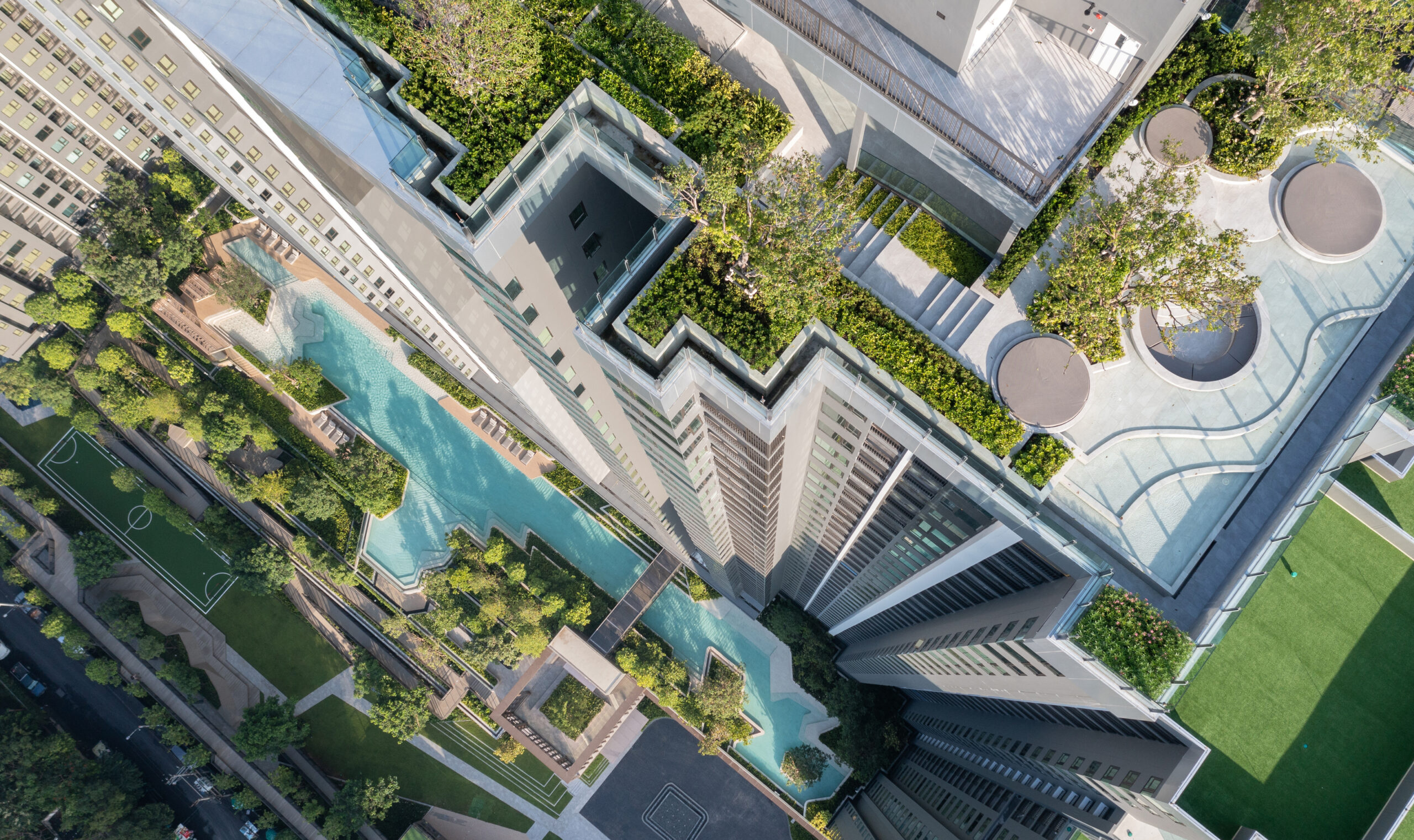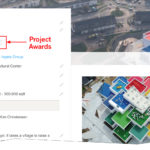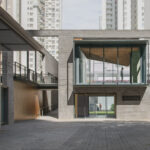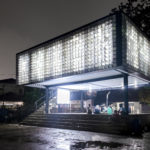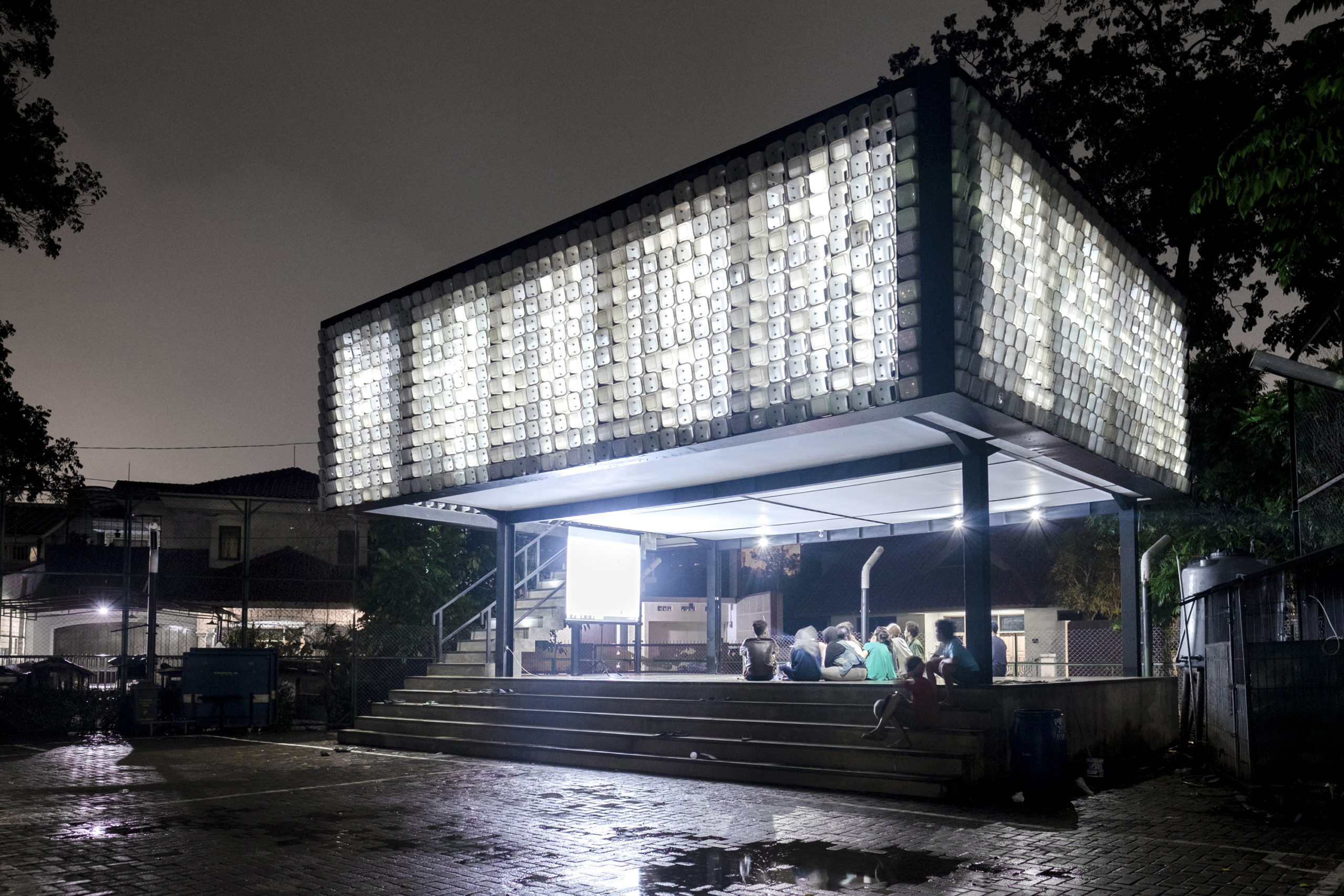The judging process for Architizer's 12th Annual A+Awards is now away. Subscribe to our Awards Newsletter to receive program updates, and stay tuned for winners announcements later this spring.
It’s another big moment for the environment and our self-made struggle to coexist with and within it. As May begins, communities from Central Sulawesi, Indonesia, head to London to ‘attend’ Unilever’s Annual General Meeting of leaders and shareholders. The multinational consumer goods giant’s profit and projections could be drowned out by calls for climate and human rights justice following land grabs committed by a palm oil supplier, Astra Agro Lestari.
Houses were burnt, habitats destroyed, and reports of intimidation and threats against local residents remain widespread and persistent. Depressingly, this is hardly revelatory stuff. A 2022 report on the company at the center of the furor led to several lost contracts — since its publication, Hershey’s, PepsiCo, and more recently, Kellogg’s canceled orders. Even Nestlé, itself no stranger to environmental embarrassment and controversy, won’t buy from the firm again.
The fact that protests are ongoing shows how long it takes for direct action to lead to meaningful change, as does the initiation date of some accusations: 2004. Meanwhile, the situation is also a sharp reminder that any business dealing with the European Union’s single market now needs to monitor its supply chain very carefully, with a new corporate sustainability due diligence directive has now and inbound law across the bloc.
We’ve also seen the UK finally introduce the full sweep of its Biodiversity Net Gain (BNG) laws. A minimum of 10% improvement on current environmental and habitat health must now be included in any property development plans. Even after diving into the fine print — with statutory credits also available as a last resort where it is not possible enhance the existing environment — the rules seem far reaching. So, this is one area where Westminster is leading its continental counterparts, with the EU’s biodiversity strategy only be published next month, while Great Britain had introduced its full law, even covering the smallest developments, by late-March 2024.

Biodiversity win: Sierra Sathorn by Redland-scape.LTD, Bangkok, Thailand
But are the associated industry’s actually able to comply? It’s a big question. Britain’s Royal Town Planning Institute has warned about the lack of guidance and widespread confusion relating to BNG. Meanwhile, after a swathe of reforms, skeptics have also voiced concern the EU is at risk of regulatory overload, asking businesses to change too much about their day-to-day practices, too quickly, without necessary bedding in periods for each major overhaul of environmental laws.
This is indicative of several things. Not least how long we’ve left it to begin making the kind of widespread legal safeguards against further ecological devastation and actionable commitments to rebuilding what has been lost. It also casts in sharp relief a historic oversight on the part of everyone involved in urban development and the built environment. Designs have categorically failed to respect nature and their surrounding environment for centuries, peaking in the last 100 years as megacities emerged. For too long, the disciplines of architecture and landscape architecture have been distanced, connected but rarely considered as equals in a project.
There are, of course, exceptions. As part of Architizer’s Sustainable Practice series, we’ve unsurprisingly featured a number of prime examples. Such as this new park in China, which aims to get kids thinking about water management through play. Before that, we even published a roundup of 7 Landmark Buildings Making Landscape the Star Attraction.
Now we’re adding Sierra Sathorn in Bangkok, Thailand. Although estimates vary widely, the metropolitan region is now believed to be home to more than 17 million people, making this an extreme primate city — far dwarfing all others in the country. It’s also a prime case of breakneck growth over the last 100 years, and the huge impact this has on nature. According to a 1919 census, there were just 479,000 living in town back then.
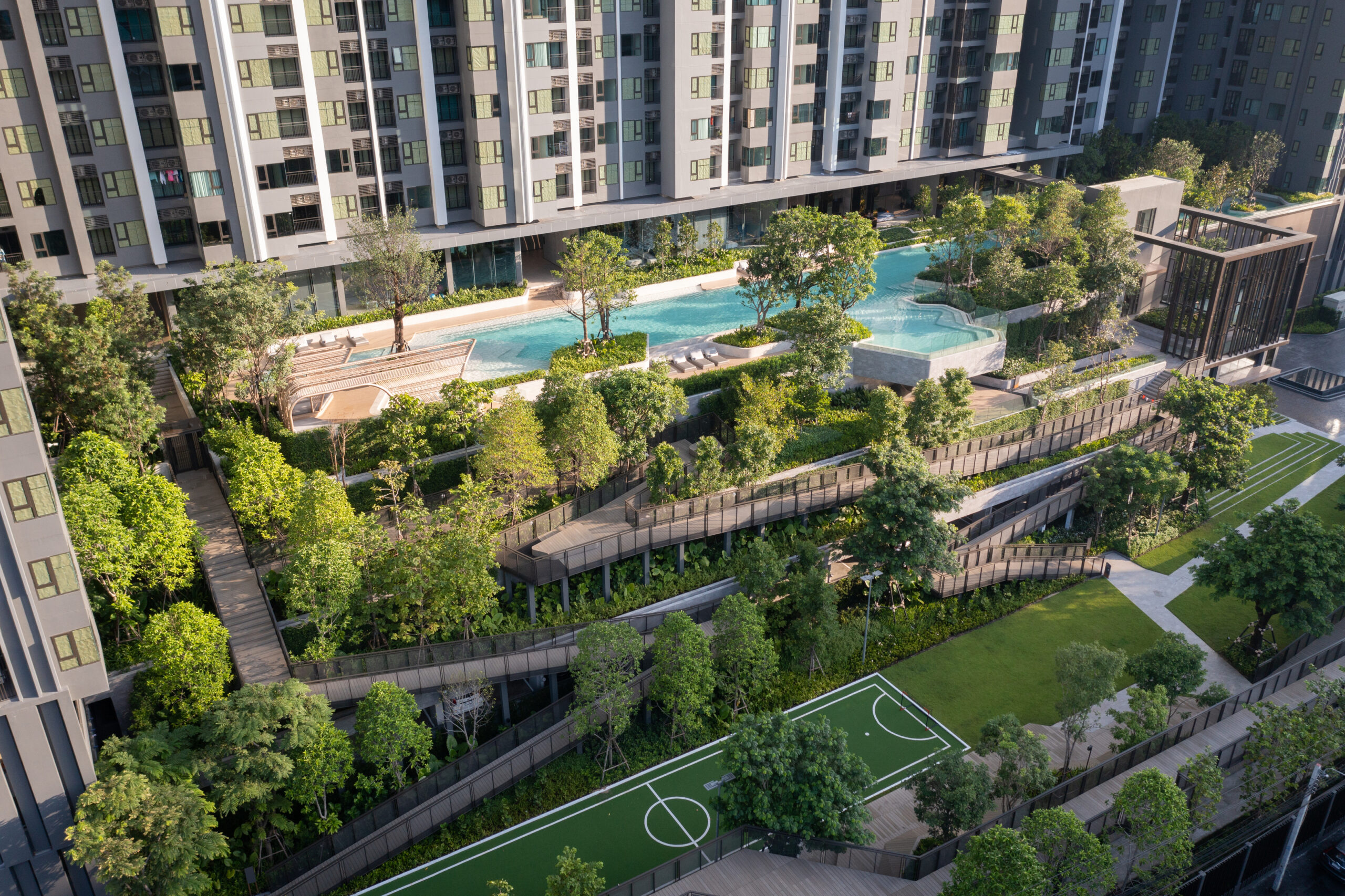
Lower levels of Sierra Sathorn by Redland-scape.LTD, Bangkok, Thailand

Mid-height pools and foliage in Sierra Sathorn by Redland-scape.LTD, Bangkok, Thailand

Rooftop sky garden at Sierra Sathorn by Redland-scape.LTD, Bangkok, Thailand
Redland-scape.LTD’s addition to this melting pot completed in 2022. Amid a densely residential area dominated by mid and high rises properties, the firm has created what it describes as an “urban terrarium prototype” based on the natural relationships between mountainous, woodland and river ecosystems. Having repurposed a podium structure, these environments are spread over the foot and mezzanine levels of a huge condominium. Mid-height and rooftop gardens also feature, installed into the fabric of the building itself, incorporating open greening, sports and recreational areas, swimming pools, and a sky forest. The emphasis is on (re)introducing a breadth of flora and fauna to reflect the heterogeneity of South East Asia’s rich wildernesses.
It’s a remarkable achievement, and one that may call to mind 1000 Trees, a unique retail destination in China which was the focus of a previous post about biodiversity in architecture and development. But in many ways Sierra Sathorn goes much further, with advanced design elements taking into account many of today’s most pressing climate challenges. Air quality is improved through oxygen production and carbon dioxide sequestration thanks to the density of trees and plants. Stormwater is controlled through run-off channels and siphoned directly into the greenery, in locations where evaporation patterns will deposit droplets throughout the leafy canopy. Here, they are caught and consumed.
The Miyawaki afforestation principle lies at the centre of Sierra Sathorn, which uses native plant and tree-planting in ways that mimic natural growth far beyond the city limits. As a result, minimal maintenance is needed, and human involvement is only really required at the initial creation stage. After this, despite complexity of the new environment, it will essentially self-regulate because it is correctly balanced. Just as the world has been since the beginning of the Holocene.

Isometric drawing showing all levels of Sierra Sathorn by Redland-scape.LTD, Bangkok, Thailand
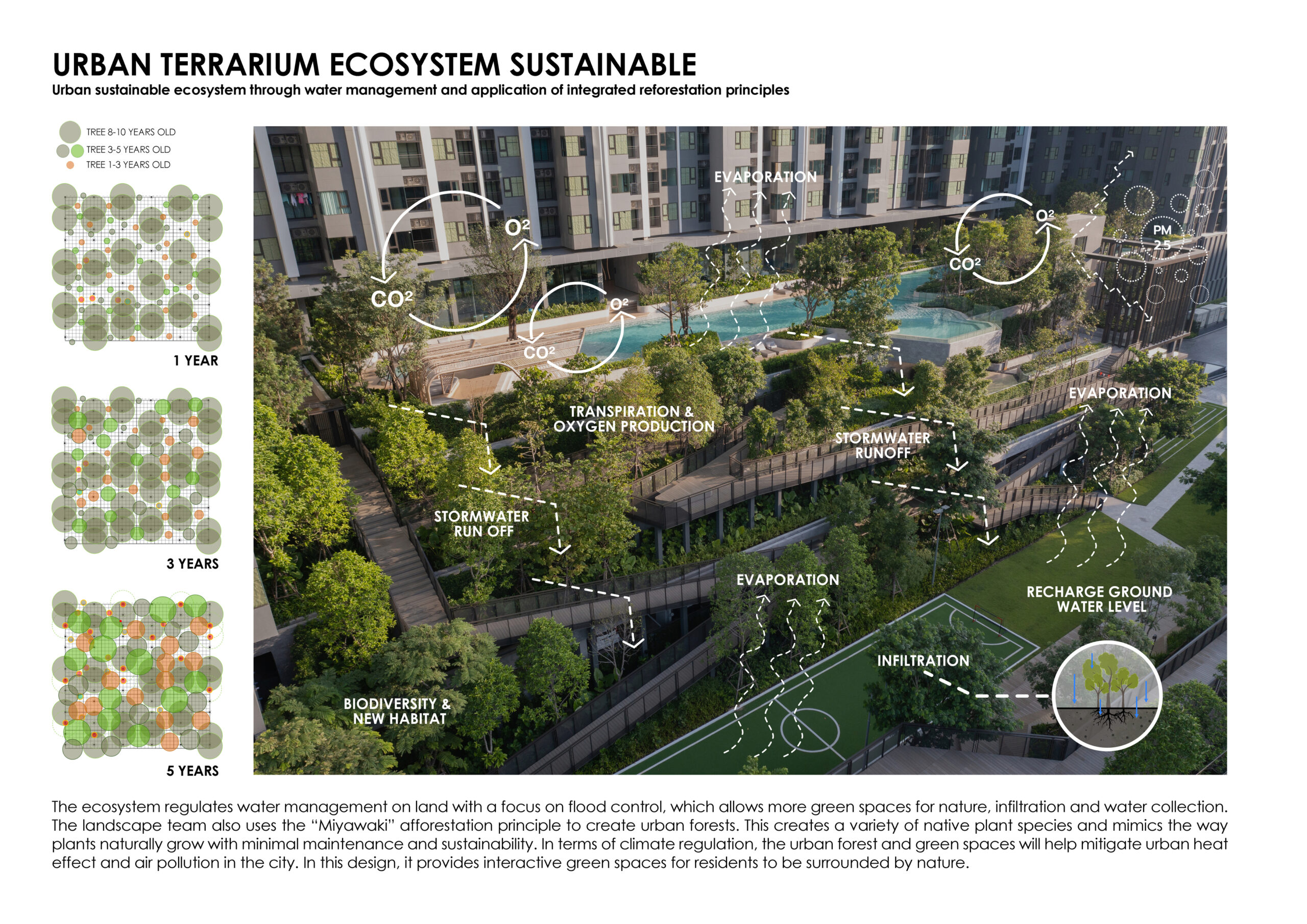
Details of the new urban ecosystem at Sierra Sathorn by Redland-scape.LTD, Bangkok, Thailand
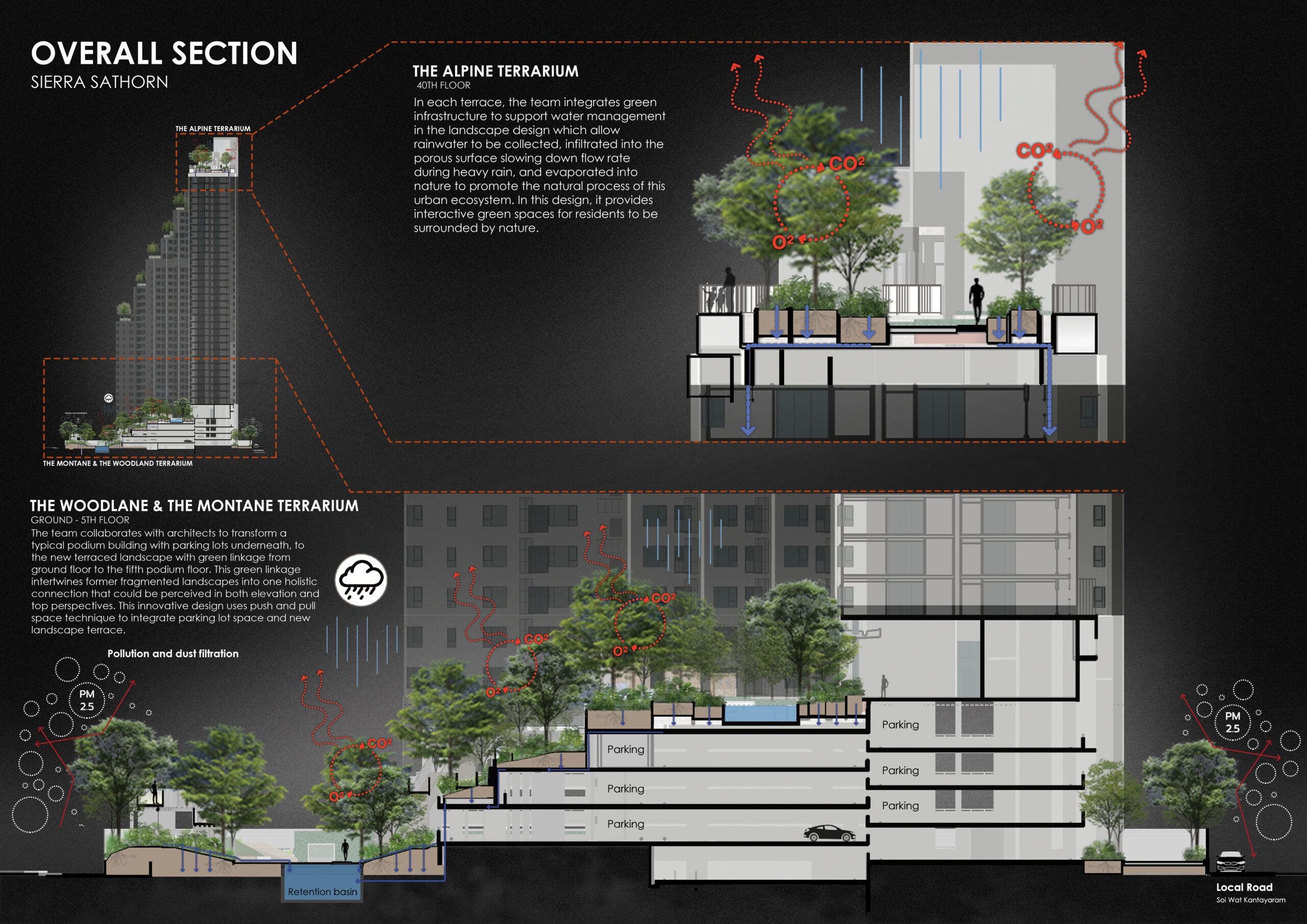
Sectional drawing of ‘urban terrariums’ in Sierra Sathorn by Redland-scape.LTD, Bangkok, Thailand
This is certainly no mean feat, but the challenge becomes far easier with in-depth, specialist knowledge. To make good on its promises, Redland-scape.LTD needed to collaborate closely with the architects of the building itself. A working relationship which placed equal importance on exterior setting as the structure. Unfortunately, though, this type of project remains a comparative rarity, particularly in country’s outside the West, although new nature restoration and biodiversity laws offer much needed hope.
Even in the US, often seen as lagging its counterparts across the Atlantic on green policy, a 2021 survey by the American Society of Landscape Architects (ALSA) showed 12% of members had seen a 100% increase in requests for climate solutions to be included in designs. Just one-in-five had seen no growth in this area whatsoever. Of the increase, 65% was driven by city and local government projects, with state authorities and community groups next, and, finally, federal government commissions. In contrast, just 11% of commercial developers had contributed to the rise, emphasising why regulations and laws need to be introduced in the first place. However, whether these will truly deliver, from London to Limoges, Washington to Warsaw, will depend on how much architects are willing to learn from and listen to their horticulturally-aligned counterparts.
The judging process for Architizer's 12th Annual A+Awards is now away. Subscribe to our Awards Newsletter to receive program updates, and stay tuned for winners announcements later this spring.
